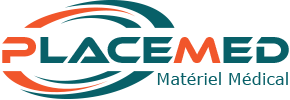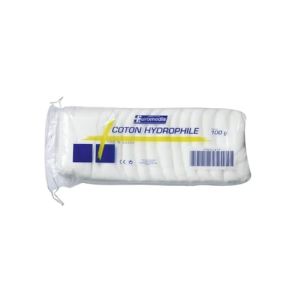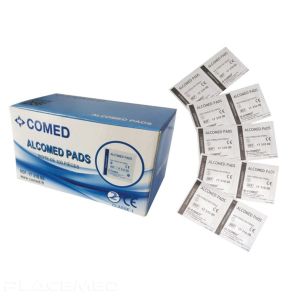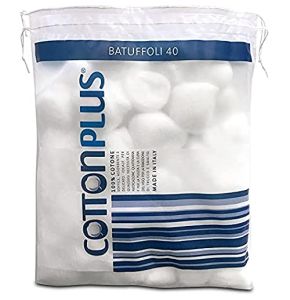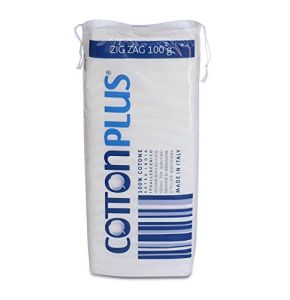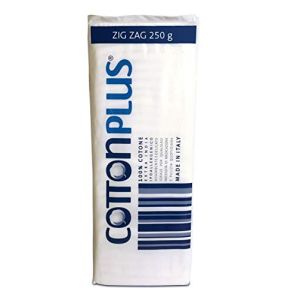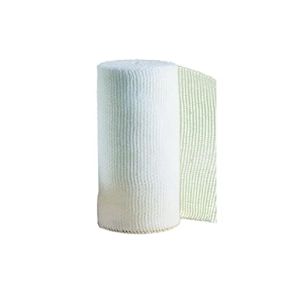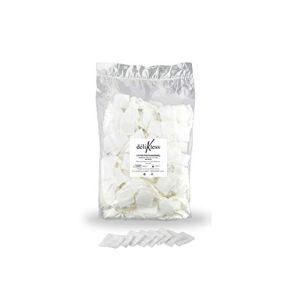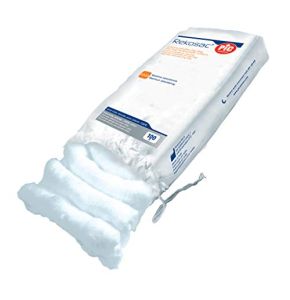Medical Cotton
18/11/2024 11
18/11/2024 11
18/11/2024 37
18/11/2024 22
18/11/2024 13
18/11/2024 13
18/11/2024 11
18/11/2024 14
18/11/2024 16
18/11/2024 10
18/11/2024 14
18/11/2024 14
18/11/2024 7
18/11/2024 11
18/11/2024 19
18/11/2024 14
Medical Cotton: Essential for Safe and Effective Care
Medical cotton is an indispensable product in the healthcare field. Versatile and practical, it is used to clean the skin, absorb fluids, and protect wounds. Its quality and purity are crucial to ensure effective care and prevent infections. Whether in hospitals, clinics, or medical offices, medical cotton plays an important role for healthcare professionals. In this guide, we will explore the different uses of medical cotton, how to choose the right type, precautions to take when using it, its role in infection prevention, and available alternatives.
What are the common uses of medical cotton in clinical practice?
Medical cotton is a versatile tool that serves many purposes in the medical environment. Here are the most common uses:
- Wound Cleaning: Medical cotton is used to clean cuts, abrasions, and surgical wounds. Soaked in an antiseptic solution, it helps eliminate germs and dirt, thereby promoting healing.
- Application of Antiseptic Solutions: Healthcare professionals use cotton to apply disinfectants to the skin before an injection or surgical procedure. This helps prevent infections by killing bacteria present on the skin's surface.
- Absorption of Fluids: Cotton is highly absorbent, making it ideal for soaking up blood, pus, or other bodily fluids. It keeps the area clean and dry, which is essential for proper healing.
- Wound Protection: Placed over an injury, cotton acts as a barrier against external contaminants. It protects the wound from infections while allowing air circulation, which promotes healing.
- Padding: Cotton can be used to pad splints or bandages. It provides comfort to the patient by preventing friction and distributing pressure, thereby preventing skin irritation.
- Medical Sampling: In some cases, cotton is used to collect samples for analysis, such as nasal or oral swabs. It is important that the cotton is sterile to avoid contaminating the samples.
Thanks to its versatility, medical cotton is an essential element in every healthcare professional's toolkit.
How to differentiate the types of medical cotton available?
There are several types of medical cotton, each with specific characteristics that make them suitable for certain uses. Here are the main types of medical cotton and their uses:
- Hydrophilic Cotton: This is the most common type of cotton in the medical field. It is highly absorbent and soft to the touch. Hydrophilic cotton is ideal for cleaning wounds, absorbing fluids, and applying solutions to the skin. It is often used in the form of compresses or pads.
- Non-Hydrophilic Cotton: Less absorbent than hydrophilic cotton, it is used when excessive fluid absorption is to be avoided. It can serve as a barrier or padding, especially to protect the skin under a cast or splint.
- Cotton Balls: Cotton balls are convenient for small applications. They are easy to handle and ideal for cleaning small wounds, applying medications, or removing makeup. They are often used in medical offices and home care.
- Cotton Rolls: Cotton rolls allow cutting the necessary amount for each use. They are economical and versatile, suitable for covering large areas, making pads, or padding bandages. They are highly appreciated in hospitals for their flexibility.
- Sterile Cotton: This cotton is treated to eliminate all microorganisms. It is essential for applications requiring total sterility, such as cleaning surgical wounds or preparing the skin before a procedure. Sterile cotton is usually individually packaged to maintain its cleanliness.
- Non-Woven Cotton: Made from synthetic fibers, non-woven cotton is less fluffy and does not leave residual fibers. It is ideal for wounds that should not be contaminated by cotton particles. It is also very soft, making it suitable for sensitive skin.
By understanding the differences between these types, healthcare professionals can choose the most suitable product for each situation, thereby ensuring quality care.
What precautions should be taken when using medical cotton?
Using medical cotton requires certain precautions to ensure safety and effectiveness of care. Here are the important points to consider:
- Risk of Residual Fibers: Traditional cotton can leave fibers on the wound, which can delay healing or cause infection. To avoid this, it is preferable to use non-woven cotton or compresses specifically designed not to shed, especially on open wounds.
- Sterility: When used on open wounds or for invasive procedures, cotton must be sterile to prevent the introduction of germs. It is important to check the packaging to ensure that the cotton is sterile and that the packaging is not damaged.
- Allergic Reactions: Although rare, some individuals may be allergic to cotton or the substances used in its treatment. If the patient shows signs of an allergy such as redness, itching, or swelling, discontinue use and consult a healthcare professional. Hypoallergenic alternatives are available for these patients.
- Single Use: To avoid cross-contamination, it is recommended to use cotton for single use. Do not reuse already used cotton, even on the same patient, as it may contain bacteria or dirt.
- Proper Storage: Store cotton in a clean, dry place, away from dust. Opened packages should be well-sealed to maintain the cleanliness of the remaining cotton. Sterile cotton should be used immediately after opening.
By adhering to these precautions, safe care is ensured, and the risks of infection or complications for the patient are minimized.
How does medical cotton contribute to hygiene and infection prevention?
Medical cotton plays a significant role in maintaining hygiene and preventing infections in the medical environment. Here's how it contributes to these objectives:
- Skin Preparation: Before an injection or surgical intervention, the skin must be cleaned to eliminate germs. Cotton soaked in an antiseptic solution is used to disinfect the area, thereby reducing the risk of infection.
- Absorption of Exudate: Wounds can produce fluids called exudates. Medical cotton absorbs these fluids, keeping the wound clean and dry. This prevents the proliferation of bacteria and promotes healing.
- Protective Barriers: By covering a wound with cotton, a barrier is created against external contaminants like dust, germs, or chemicals. This protects the wound from infections and irritations.
- Cleaning Instruments: Cotton can be used to clean medical instruments with disinfectants. It helps remove residues and microbes, ensuring that instruments are safe for subsequent use.
- Personal Hygiene: Healthcare professionals use cotton to maintain their own hygiene, such as cleaning hands or wiping sweat. This helps reduce the transmission of germs between patients.
In summary, medical cotton is a simple yet effective tool for maintaining a clean environment and preventing the spread of infections.
What alternatives to medical cotton can be used and in what contexts?
Although medical cotton is widely used, there are alternatives that may be preferable in certain cases. Here are some of these alternatives and their contexts of use:
- Non-Woven Compresses: Made from synthetic fibers such as polyester or viscose, they are soft, absorbent, and do not leave residual fibers. They are ideal for wounds that should not be contaminated by cotton particles. They are also suitable for patients allergic to natural cotton.
- Synthetic Materials: Foam sponges or polyurethane pads are used to absorb fluids without leaving residues. They are often used for deep or highly exudative wounds, as they can absorb large amounts of fluid.
- Surgical Gauze: Gauze is lightweight and breathable, allowing the wound to breathe. It is used to cover wounds, apply medications, or absorb fluids. Gauze can be sterile or non-sterile, depending on the needs.
- Antiseptic Wipes: Soaked with disinfectant solutions, they are used to clean the skin or surfaces. They are convenient and ready-to-use, ideal for quick care or on the go.
- Sterile Adhesive Bandages: For small cuts or abrasions, adhesive bandages can replace cotton. They protect the wound without the need for tape or additional bandaging.
The choice of alternative depends on the specific needs of the patient and the situation. For example, for a patient allergic to cotton, non-woven compresses are an excellent option. Similarly, for a highly oozing wound, a foam sponge may be more effective than a cotton ball.
It is important to consult a healthcare professional to determine the best option for each case. Each material has its advantages and disadvantages, and the choice should be made based on the wound condition, patient sensitivity, and treatment objectives.
In conclusion, medical cotton is an essential product in the medical field, offering multiple uses for cleaning, protecting, and healing wounds. Its quality and purity are crucial to ensure effective care and prevent infections. By understanding the different types of cotton available and the precautions to take when using it, healthcare professionals can provide the best possible care to their patients.
At Placemed, we offer a wide range of high-quality medical cotton to meet all your needs. Whether you are looking for hydrophilic cotton, cotton balls, sterile cotton, or alternatives like non-woven compresses, you will find everything you need on our platform. We are committed to providing reliable and safe products to support healthcare professionals in their essential mission.
Feel free to browse our selection and contact us for any questions or advice. Your satisfaction and the health of your patients are our priority.
 Francais
Francais 